The vast majority of modern bikes, whether mountain bikes, road bikes or gravel bikes, come with derailleur gears. The rear derailleur moves your chain up or down a set of sprockets attached to your rear wheel. Those sprockets – or gear wheels, if you prefer – are your cassette.
Cassettes come in a wide range of sizes to suit all disciplines. The size of a cassette is usually expressed by quoting its smallest and largest cogs. As an example, a typical modern road bike cassette may be an 11-32t (teeth) cassette. For a mountain bike cassette, the range may be something like 10-52t.
In this guide, we'll talk you through what a cassette is and how to tell the 'speed' of your cassette, explain the typical range of a cassette for all disciplines, compare the key difference between cheap and expensive cassettes, and much more.
What is a cassette?
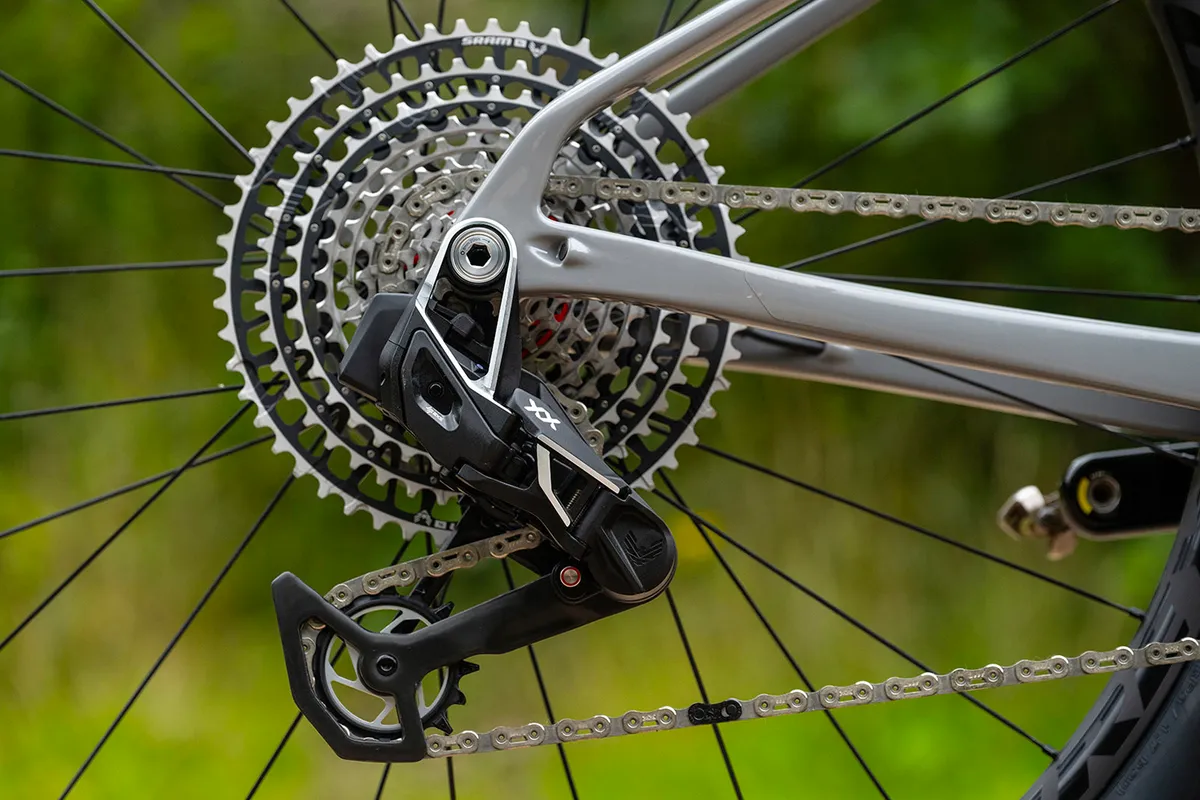
Although it might seem straightforward, there’s a lot of engineering that goes into a bike cassette.
Rather than just being a collection of cogs, the sprockets in a cassette are designed to work together as a whole, with the individual sprockets positioned precisely relative to one another to ensure the chain will shift smoothly between cogs.
Individual teeth on the sprockets have shapes that differ from one another and there are usually ramps built into the sides of the sprockets. This helps ensure smooth shifting between gears.
The designs of these ramps have been honed over time.
Shimano, for example, uses a system it calls Hyperglide, which is engineered to provide smooth shifting. Its latest cassettes have a newer system, called Hyperglide+, which Shimano says reduces shifting time by up to a third relative to Hyperglide, and improves shifting performance under power, up and down the cassette.
Other cassette suppliers, such as SRAM and Campagnolo, have equivalently honed cassette designs.
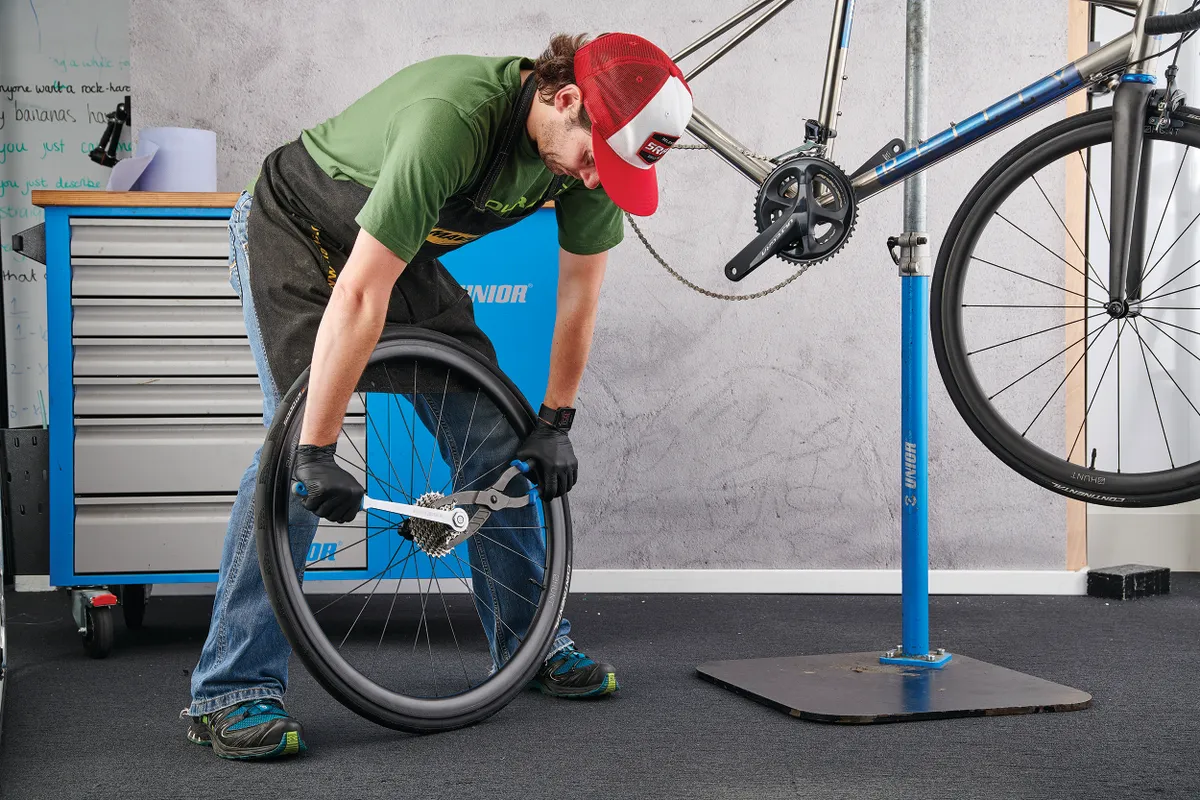
Since they’re designed as a whole system, the sprockets in a cassette are sold as a set rather than individually, and usually need to be replaced as a complete group, too.
You usually can’t just swap out one sprocket from a set for one with a different number of teeth without compromising shift performance.
We have an explainer on how to change your cassette in five simple steps.
What 'speed' is my cassette?
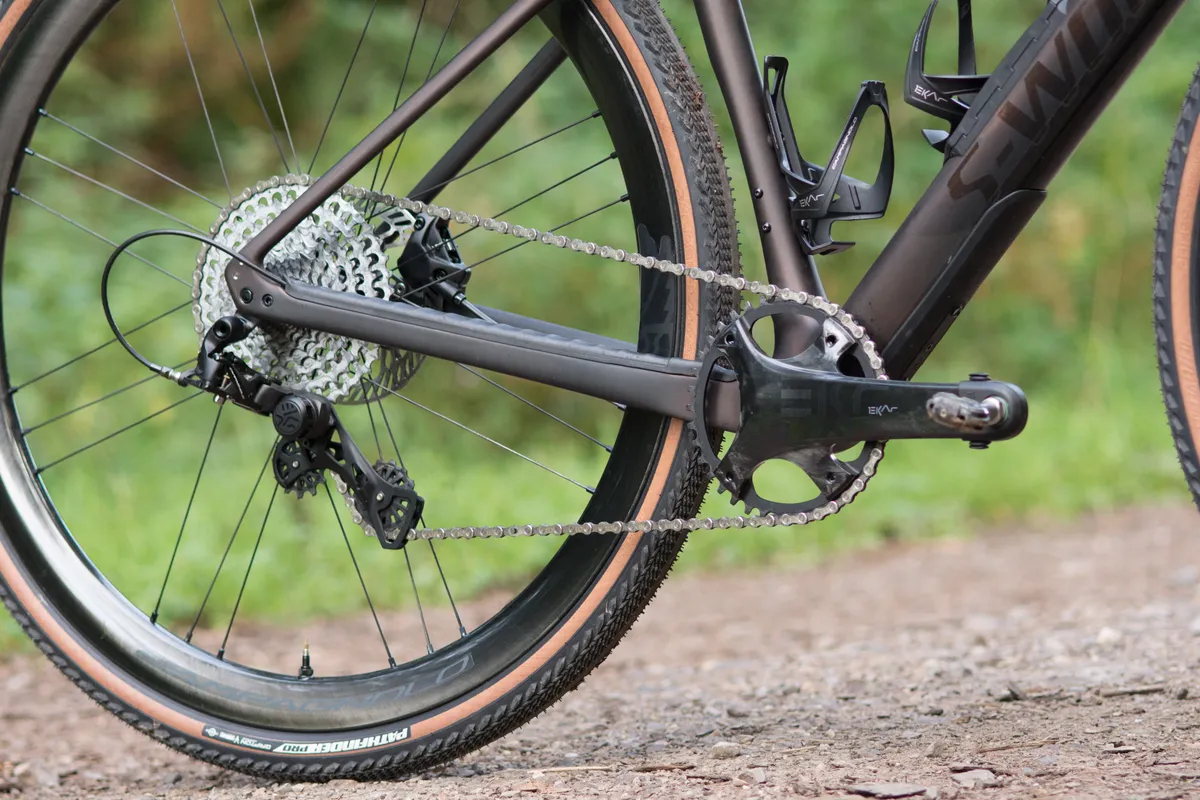
A cassette might have anything from 7 up to 13 sprockets.
These days, it is increasingly common to see higher-spec road bikes with 12-speed gearing, Shimano having joined SRAM and Campagnolo with 12-speed groupsets in 2021 with the release of its Dura-Ace Di2 R9200 groupset.
For mountain bikes, 12-speed cassettes are largely the default for higher-spec groupsets, paired with a single-ring crankset.
The number of sprockets on your cassette must match the number your other components are designed for.
That’s because almost all gear systems are indexed, and shifters are designed to move the derailleur a set distance for each click of their mechanism. This means they won’t work with cassettes that don’t have the same number of sprockets, because sprocket spacing is narrower on cassettes with more sprockets. The chain has to be the right width to match the number of sprockets, too.

In general, lower-spec groupsets offer fewer gear ratios and so have cassettes with fewer sprockets.
There are exceptions though, with SRAM’s X01 DH and GX DH downhill mountain bike groupsets using seven-speed cassettes, which work with 11-speed chains. The lower number of gears is designed to give closer gear ratios and allow shorter cage derailleurs for better ground clearance, on bikes where climbing capability is not required.
Cassette gear ratios
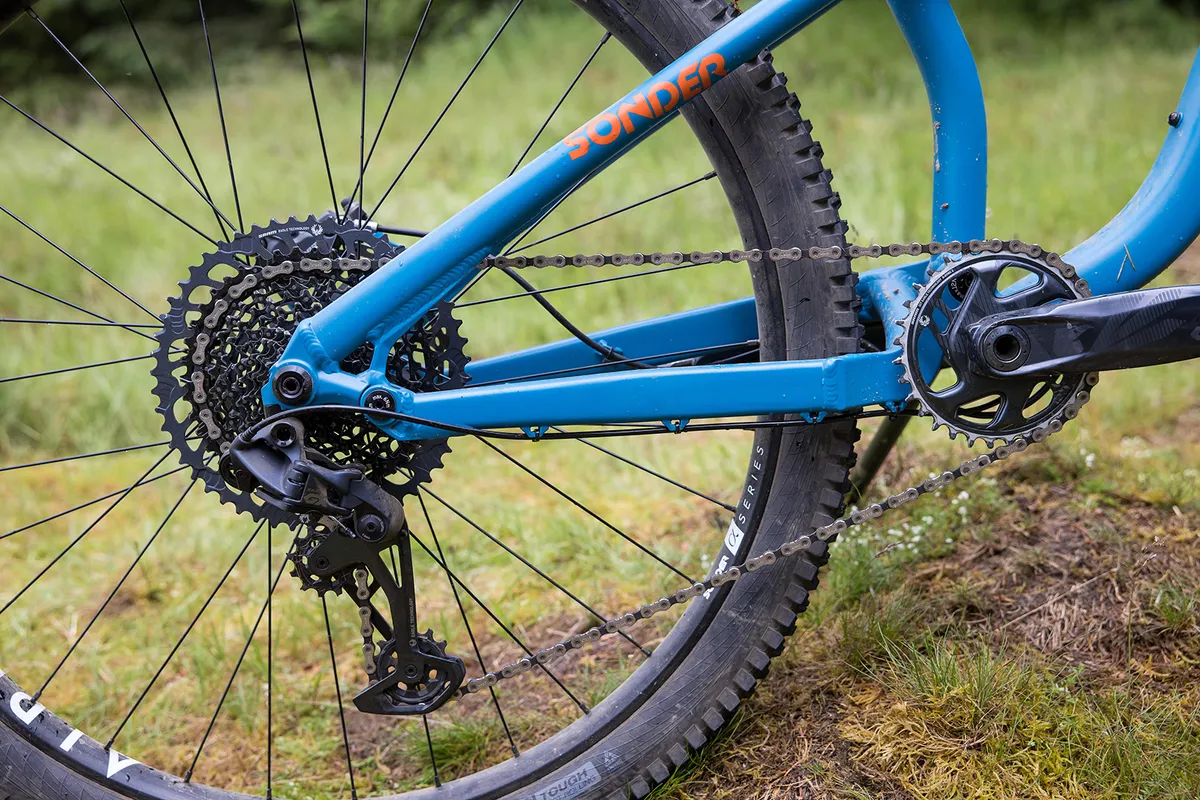
Alongside the number of sprockets, the range of different tooth numbers offered is a key determinant of a cassette's compatibility with your drivetrain.
In general, cassettes start at 10, 11 or 12 teeth. Again, there are exceptions, with options available with 9-, 13- or 14-tooth smallest sprockets.
You may sometimes see brands refer to their cassettes as having a certain range in the form of a percentage.
For example, SRAM boasts a 520 per cent range with its 10-52t cassettes. How has SRAM arrived at this figure, and how do you work out your gear-range percentage?
Well, the smallest cog is a 10-tooth, and the largest cog is 52-tooth, which is 520 per cent larger than the 10-tooth cog, thus giving a 520 per cent range.
It’s important to note that this figure is only indicative of the range of gears you have on your cassette, and is not the same as working out how far you will travel with your chosen gear ratio.
Likewise, it can’t tell you if it is suitable for the type of riding you do. For that, you would need to calculate gear inches, which is another topic in itself.
Road bike cassettes

Road bike cassettes have mushroomed in size in recent years.
Where an 11-28 would have been considered an 'easy' training cassette a few short years ago, the smallest cassette available for a Shimano Dura-Ace R9200 is an 11-28. That might not sound like much but, when you consider pro riders would typically ride on 11-23 or 11-25 cassettes, it's a sizeable difference.
The reason for this development is firstly due to the increase in cassette speeds.
Now that 12-speed road bike groupsets exist, cassettes can have a larger range and the jumps between each gear can be relatively small.
For example, at the lower end of the cassette, you can have as little as a one-tooth jump between the early cogs, and still have the range at the easier end. If you were running a 7- or 8-speed system, for example, in the same range, the jumps would be bigger.
Attitudes towards gearing have also changed – it's no longer seen as a badge of pride to needlessly grind away at a lower cadence, and our knees are all the more happy for it.
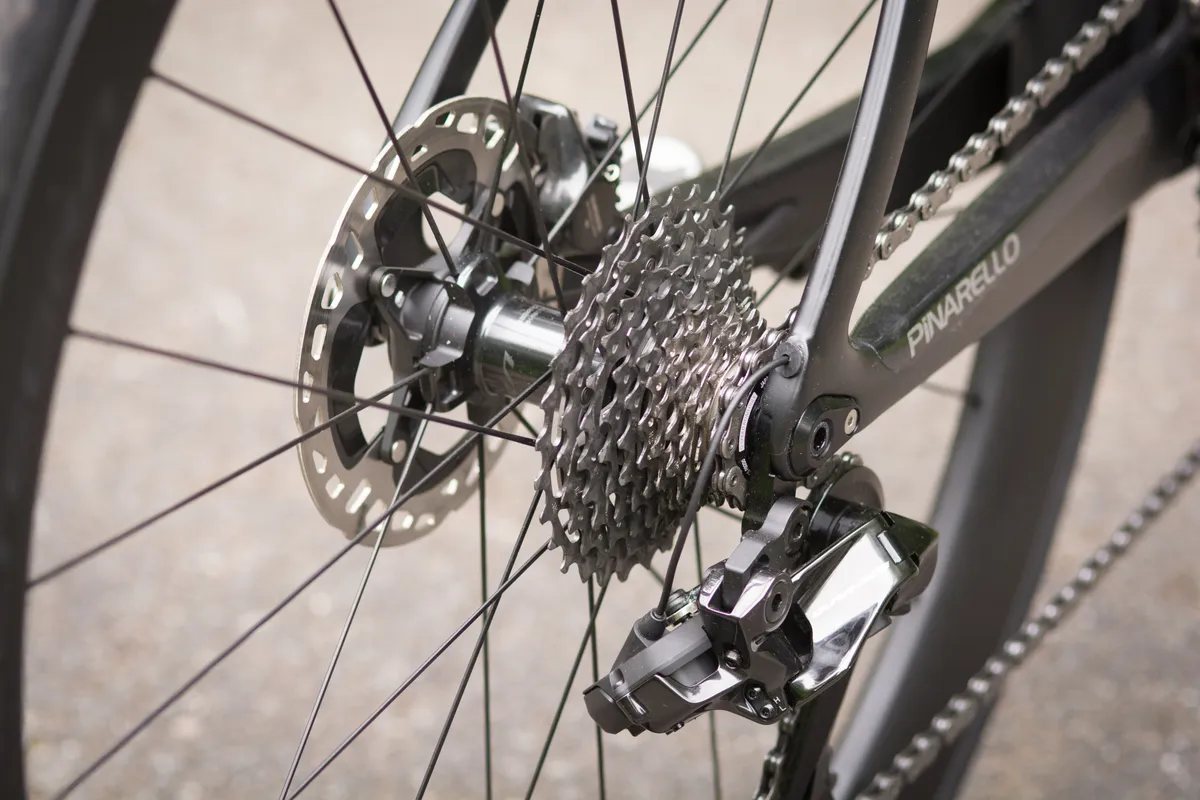
Both Shimano and Campagnolo have stuck to pre-existing gear ratios in their transformations to 12-speed, and have used the additional cog as a means of bridging the gap between the bigger jumps of the cassette, so the ratios are closer together. SRAM has gone down a different route (more on that in a moment).
Shimano’s latest R9200 is offered in 11-28, 11-30 and 11-34 options. These ratios also existed in Shimano’s 11-speed configurations, although it’s important to note that Dura-Ace R9100 did not have an 11-34 option.
Campagnolo offers an 11-29 option for all of its 12-speed groupsets, which was the largest range offered in its 11-speed ecosystem.
In addition, there are now 11-32 cassette options across the board. There is also an 11-34 cassette, but that is only available and compatible with Chorus.

SRAM, on the other hand, has shaken up what we have come to understand as conventional gear ratios with its latest 12-speed AXS groupsets.
Its addition of a 12th cog instead acts to increase the range of the cassette. SRAM road cassettes start from a smaller 10t (which requires the use of the XDR freehub body, which we’ll come onto later).
SRAM has also revamped its chainring sizes, that are smaller than convention at 50/37 (Red only), 48/35 and 46/33. This compares to the more conventional gear ratios of 53/39, 52/36 and 50/34.
SRAM cassettes are available in 10-28 (Force and Red only), 10-30, 10-33 and 10-36.
Mountain bike cassettes

Mountain bike cassettes have similarly increased in size. This is largely down to the advent of 1x drivetrains – with no small inner ring for climbing in a 1x setup, cassettes need to offer a wider range in order for riders to be equipped with a suitable climbing gear.
Unlike road bikes, mountain bike cassette options are usually more limited.
Shimano offers only two cassette sizes in its 12-speed line-up – 10-45 (not available for Deore) and 10-51. The 10-51 option can only be used on a 1x setup, but the 10-45 can be used on either 1x or 2x systems.
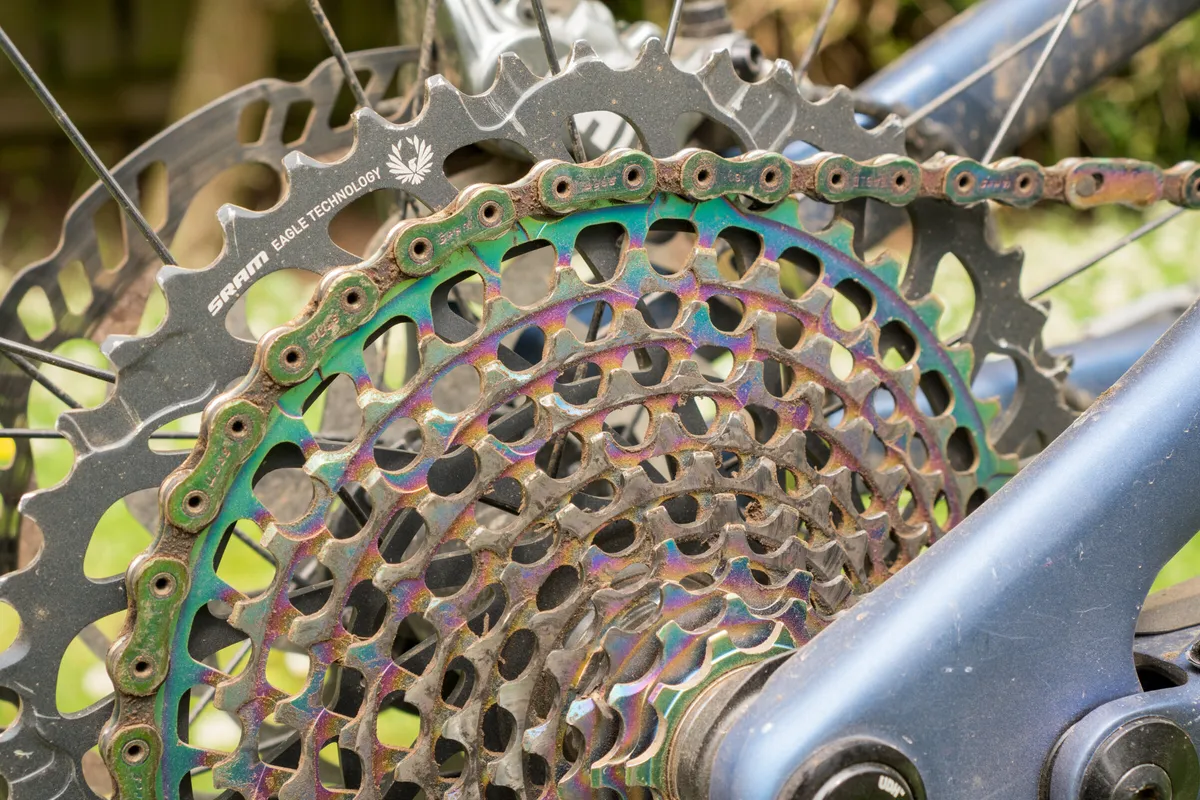
SRAM also offers only two cassette sizes in its Eagle lineup – 10-50 and 10-52. The 10-52 is the widest-range cassette made by either manufacturer. Although there are currently two options, it's likely the 10-50 will be phased out in time because it has been superseded by the 10-52.
You need to ensure you're using a compatible rear derailleur if you're using the 10-52 option, because the previous-generation Eagle mechanical rear derailleur’s cage is slightly too short.
For users of SRAM’s two entry-level Eagle groupsets, SX Eagle and NX Eagle, SRAM offers an 11-50 cassette. This enables the cassette to fit onto a standard Shimano HG freehub (again, more on this later) because the 10t options require the use of an XD freehub.
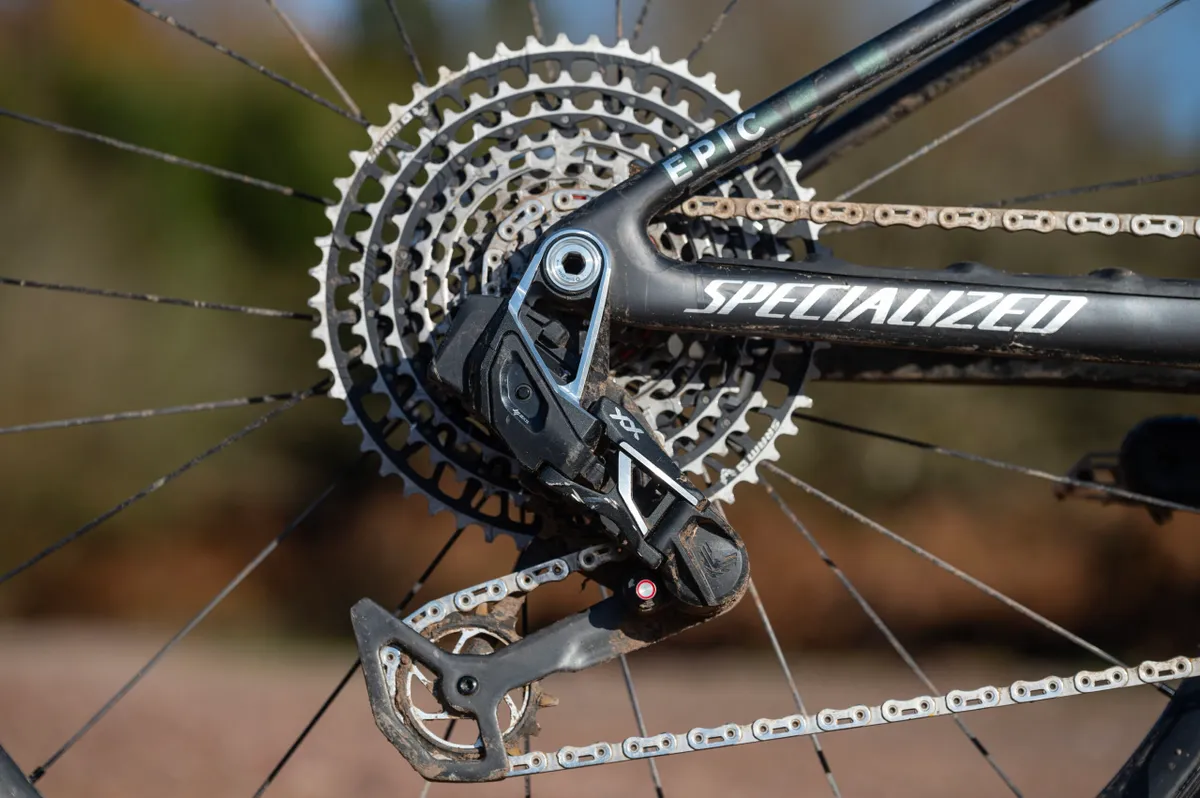
SRAM has since released its new Transmission that does away with the derailleur hanger altogether. It relies on a rear derailleur without limit and B-gap screws and, as such, it'll only work on a 10-52t cassette.
Gravel bike cassettes

Gravel bikes are best viewed as a crossover between road and mountain bikes. As such, it’s normal to see them specced with either a road or mountain bike cassette.
However, as groupset manufacturers have jumped onto the gravel bandwagon, there are now gravel-specific gearing options available.
SRAM’s XPLR AXS groupsets are designed specifically for gravel riding. SRAM XPLR cassettes have a range of 10-44 and require their own compatible rear derailleur. It is also possible to mix and match drop-bar shifters with mountain bike Eagle eTap AXS components if you want an especially wide-range 1x build. SRAM dubs this a ‘mullet’ setup.
You can also mix and match XPLR AXS shifters and crankset with a Transmission drivetrain.

SRAM's latest Red XPLR AXS groupset differs in that it relies on a direct-mount rear derailleur, much in the same vein as Transmission. This differs from all other SRAM cassettes in that it is 13-speed and uses a 10-46t ratio.

Campagnolo is the other manufacturer to make 13-speed groupsets for gravel. The Campagnolo Ekar 13-speed gravel groupset offers cassettes that start with only nine teeth in their smallest sprocket. Cassettes are offered in 9-36, 9-42 or 10-44 options. Ekar is 1x only.
The second-tier Campagnolo Ekar GT groupset is also 1x only but has an option for a 10-48t cassette.
Shimano GRX users can pick between 10-45 and 10-51t on 12-speed 1x drivetrains, or 11-34 or 11-36t in its 2x permutations.
For the original 11-speed incarnation, you can choose to spec one of Shimano's own 11-speed road or mountain bike cassettes. The road cassettes go up to an 11-34 and mountain bike cassettes are offered in 11-40, 11-42 or 11-46. Shimano’s cassette range might sound more limited than its competitors, but it is important to note that you can run GRX either as a 1x or 2x system.
Cassette compatibility explained
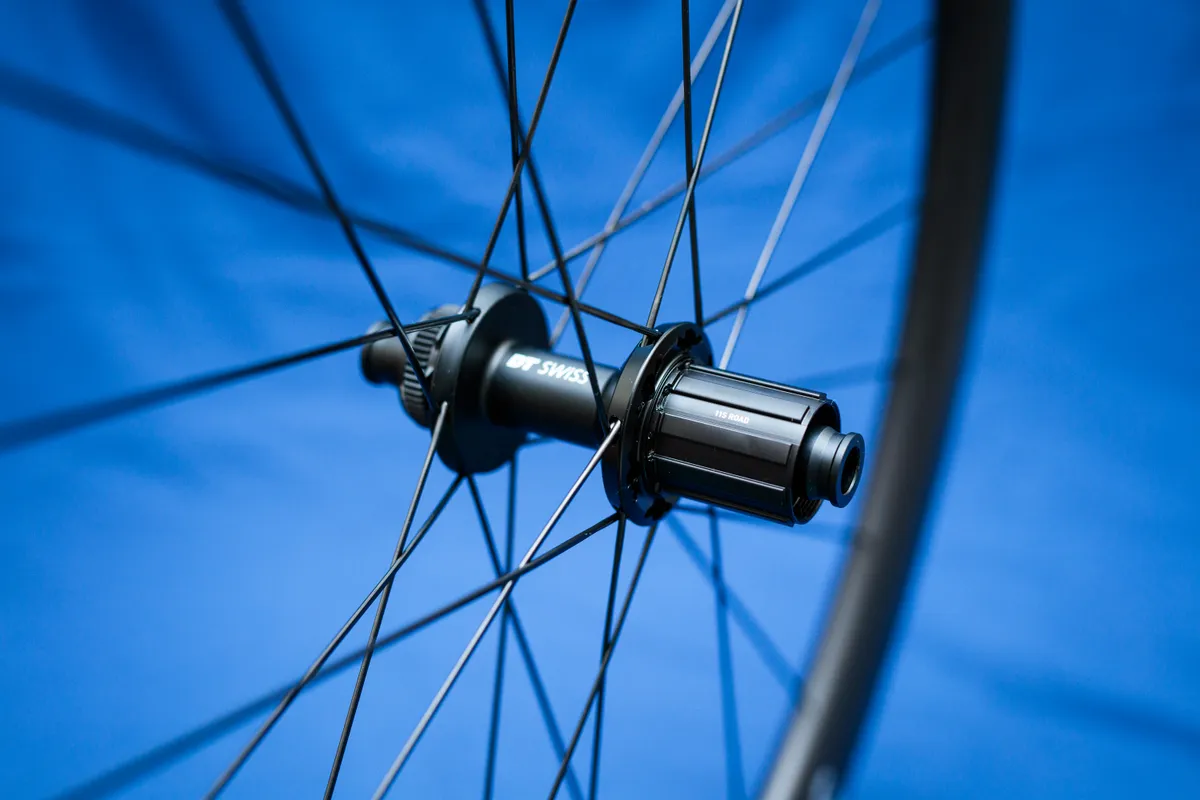
Freehub compatibility
A freehub has splines that mesh with notches in your cassette. These ensure that your cassette’s sprockets are positioned correctly relative to one another and are in the right orientation for the whole system to work properly.
Each manufacturer has its own freehub design, meaning not all cassettes will work with every wheel (or groupset).
A full explainer on freehubs, how they work and their compatibility can be found in our beginner’s guide to freehubs.
Shimano freehubs
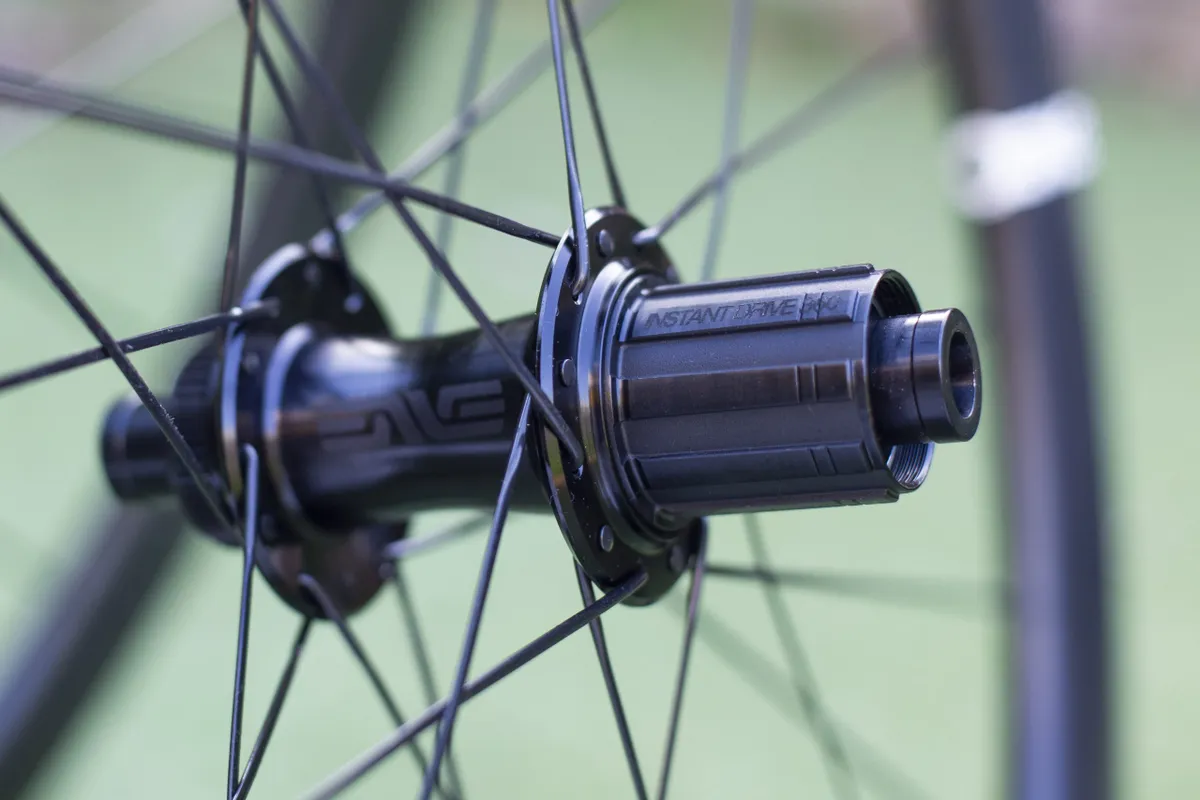
The most common system is the Shimano 11-speed HG-style freehub, which has 9 splines. Most Shimano groupsets up to the 11-speed era used this style of freehub. SRAM groupsets prior to the current generation of 12-speed groupsets also used the same freehub design, although there are a handful of exceptions with the larger cassette ratios on their 1x11 groupsets.
Shimano recently released an updated freehub design for its road bike groupsets with Ultegra’s and Dura-Ace’s move to 12-speed, although this is backwards-compatible with 11-speed Shimano freehubs.
On the mountain bike side, Shimano uses its Microspline freehub standard for its 12-speed Deore, SLX, XT and XTR groupsets.
If you are specifically using a Shimano HG freehub, you need to consider how wide the cassette you are buying is. Road wheels have slightly wider freehubs than MTB ones – by 1.85mm – and 11-speed Shimano HG road cassettes are slightly wider than 8- or 9-speed ones, again by 1.85mm.
You can fit a mountain or road cassette with fewer ratios on an 11-speed road hub by adding a 1.85mm spacer on its inner side, but you can't fit a road cassette on an MTB freehub. Since 10-speed road cassettes are narrower than 8- or 9-speed ones, you need to use a 1.85mm spacer, plus an additional 1mm one for it to fit.
Campagnolo freehubs

Campagnolo has also used its own freehub design that’s different and incompatible with Shimano and SRAM cassettes.
The brand has also brought out a new freehub standard called N3W to support its 13-speed Ekar cassettes. An adaptor for this freehub enables it to work with Campagnolo’s older-standard cassettes too.
SRAM freehubs
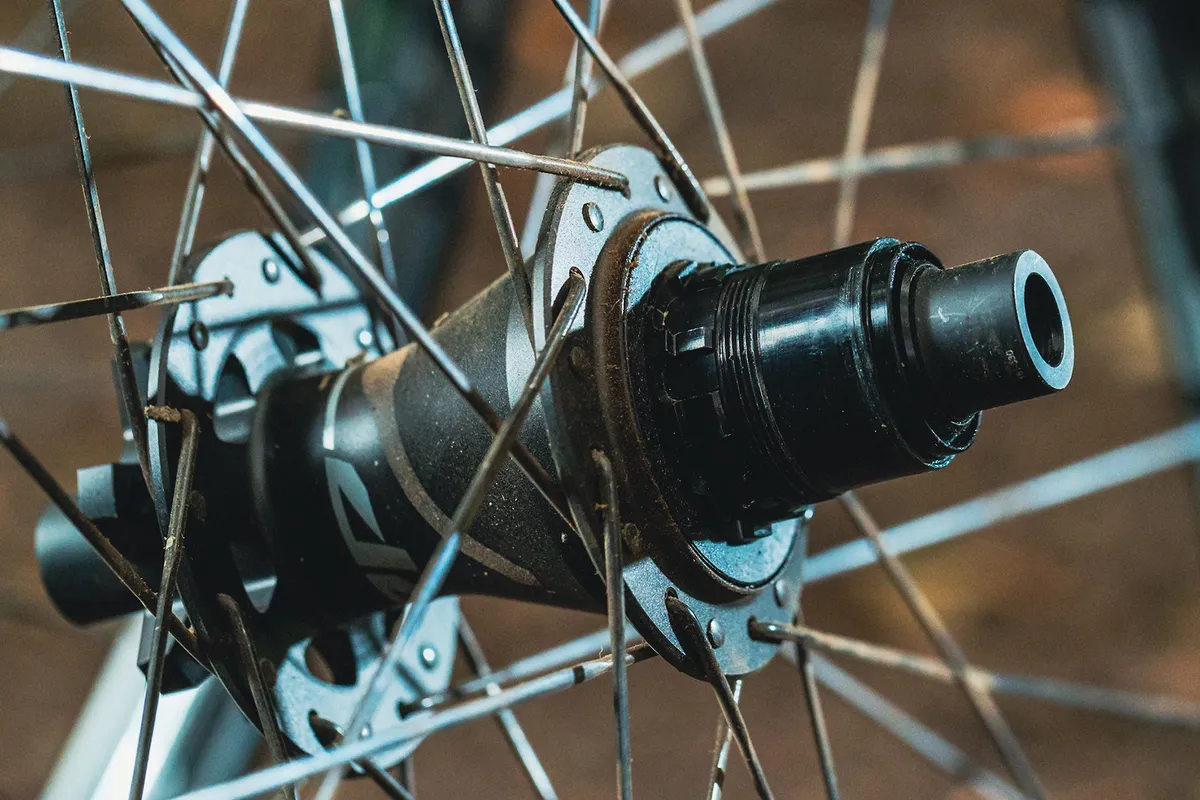
SRAM introduced its XD freehub standard when it started rolling out cassettes with a 10-tooth smallest cog. It recently ported this design over to the road with XDR, which also enables the use of 10-tooth cogs, but is slightly wider than the road bike standard.
SRAM XDR road cassettes are 1.85mm wider than SRAM XD MTB cassettes. With a spacer, you can run an XD cassette on a road wheel with an XDR body, but you can’t use an XDR cassette on an XD freehub.
Mountain bike versus road cassettes
Some people may wish to use a road bike cassette on a mountain bike or vice versa. Here, we'll go over why you may (or may not) choose to do so, and look at the compatibility issues both options may present.
Most people won’t want to use a road bike cassette on a mountain bike. The range of a typical road cassette is much smaller than a mountain bike, and riding off-road requires a wider spread of gears to winch your way up technical climbs but still have a low enough gear for the descents.
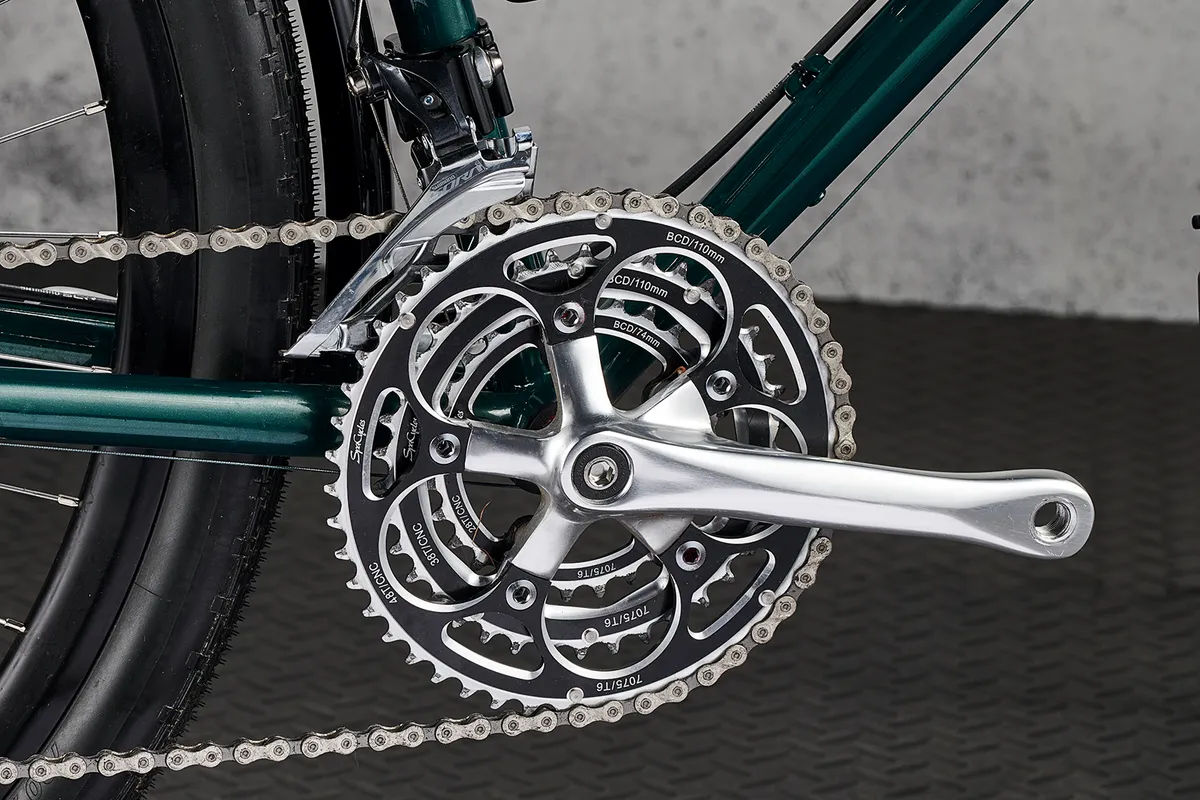
If you are still using a triple crankset, you may have sufficient overall range with a road cassette, but this is a fairly specialist application these days.
You may want to consider using a mountain bike cassette on a road bike if you require an easier climbing gear, or if you’re bikepacking. However, you will need to ensure your freehub and derailleur are compatible with a larger-range cassette.
The cage of a rear derailleur is designed for a certain range of gears. For example, Shimano’s outgoing Dura-Ace R9100-SS rear derailleur is designed for use up to an 11-30 cassette.
This means it wouldn’t be compatible with an 11-34 cassette because the cage of the rear derailleur isn’t long enough to enable the derailleur to take up enough slack from the chain when riding in the smallest cog of the cassette, given that the chain's length needs to be long enough to accommodate the larger 34t sprocket.
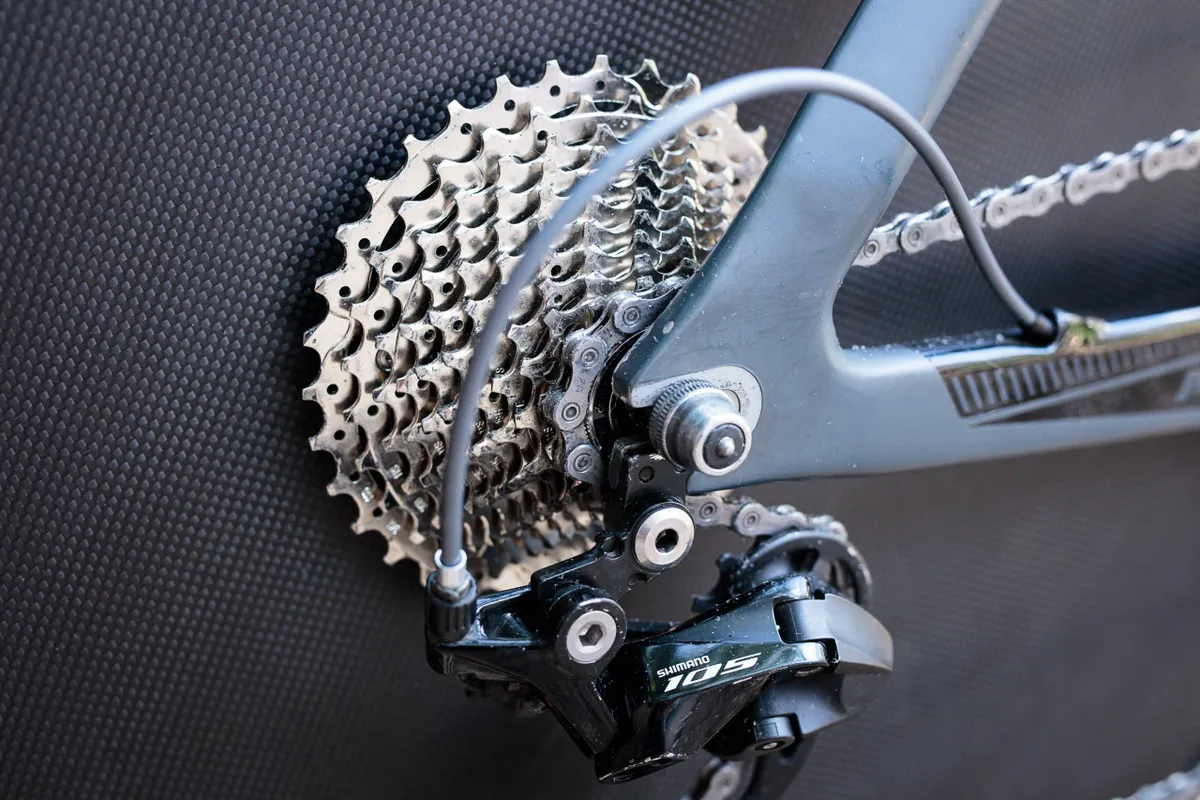
If you wanted to use an 11-34 cassette, as well as buying the relevant cassette, you would need to buy a compatible rear derailleur. In this example, it would be an Ultegra R8050-GS or 105 R7000-GS rear derailleur. The GS denotes that these are ‘medium cage’ derailleurs. The same rule applies to Shimano Di2 derailleurs.
SRAM AXS rear derailleurs can take up to a 33t for road, and this is denoted by the ‘Max 33t’ written on the inside of the derailleur cage. There is also a ‘Max 36t’ option to pair with the 10-36 cassette, as well as an XPLR rear derailleur, which can take up to a 44t (or the 10-46t cassette in the case of Red XPLR AXS).
Campagnolo 12-speed rear derailleurs can accept up to an 11-32. The only exception is Campagnolo Chorus, which can take up to an 11-34.
If you’re changing to a larger cassette ratio, you’ll also want to make sure your chain is of a sufficient length.
Cassette materials: steel vs aluminium vs titanium

The least expensive cassettes are typically made of pressed steel, which is hard-wearing but heavy. Move up the price range and you’ll usually get flashier materials and better finishing.
For example, the top-spec Shimano Dura-Ace R9200 cassette has five of its 12 sprockets made of titanium. Steel is still used for the smallest sprockets on the cassette because there are fewer points of contact with the chain. A softer material would wear out more quickly.
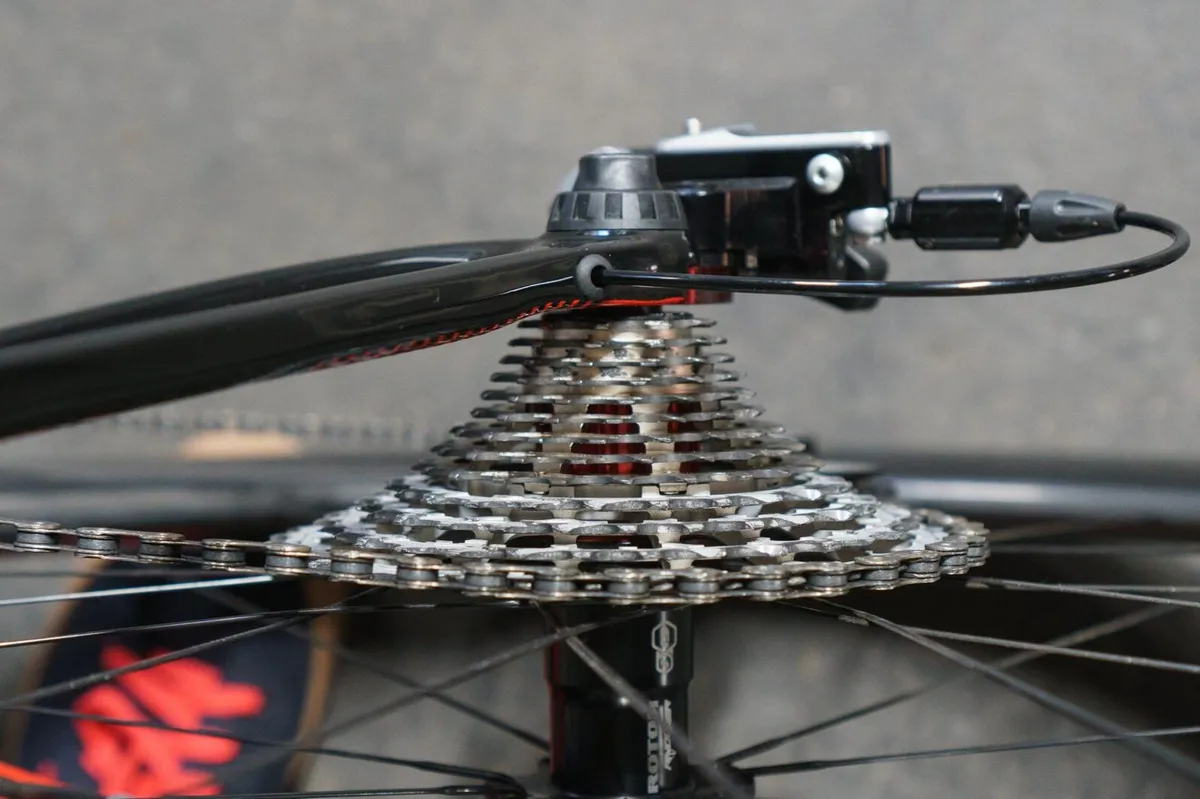
SRAM saves weight in its highest-spec SRAM Red AXS 12-speed road cassette by machining it as one piece from a single block of steel, which allows the removal of a lot of material. Rotor and Miche both save weight by making their cassettes, which are compatible with major road bike groupsets, out of aluminium alloy.
Larger sprockets are often joined together in clusters that are supported by a single carrier – or 'spider' – that meshes with the freehub.
This saves weight and, since it isn’t subject to wear from the chain, the carrier is often made of a lighter material – carbon fibre in the case of Dura-Ace cassettes
Where cassettes have individual sprockets, the mid-range ones are usually separated by spacers, which may be made of alloy or in some cases plastic. The smaller sprockets are built with the spacer incorporated into them.
Most cassettes (but not SRAM XD and XDR) are secured to the freehub body with a locknut, which comes as part of the cassette. Again, the default is steel, but aluminium alloy is a lighter alternative that may be used.
Cassette prices: what do you get for your money?

You can pay a lot of money for a high-end cassette; the most expensive cassettes now cost over £300. So what do you get for the price?
Higher-spec cassettes will usually be made from more exotic materials, such as titanium or carbon fibre for some sprockets and their carriers. Others, such as SRAM Red road cassettes, are machined in one piece. In general, higher-spec cassettes are more intricately finished and weigh less than cheaper ones.
Beyond weight, there’s not much difference in performance between a Dura-Ace 11-28 cassette and one from a Shimano Ultegra or a Shimano 105 groupset, so you can save yourself considerable expense by down-speccing.
There are equivalent options with SRAM, and with the advent of Rival eTap AXS, those now extend to its 12-speed road groupsets, offering a much cheaper alternative to Red and Force-level cassettes. The same can be said of equivalent mountain bike groupsets.
It’s worth remembering a cassette is a wear component and will need periodical replacement though.
If you change your chain when it is at .5 on a chain checker tool (11/12/13-speed) or at .75 (for 10-speed and below), you can – as a very rough rule of thumb – run three chains on one cassette. Some riders will fare better, others will go the other way. It all depends on how clean you keep your chain and your local riding conditions.
If you let the chain wear further than the recommended intervals, the cassette will also wear as the rollers on the chain elongate. Because there’s a considerable expense in replacing a top-end cassette, you’ll want to keep on top of maintenance to avoid unnecessary costs.
